DSPS Phase Shift Calculator
Estimate Your Sleep Phase Shift
Note: These are estimates. Individual results may vary based on consistency of practice, body type, and environmental factors.
Consistent implementation of sleep hygiene practices is key. Remember to combine your routine with morning light exposure and maintain a consistent wake time.
Many people who struggle to fall asleep until the early morning hours wonder why a simple bedtime ritual never seems to help. The answer often lies in the interaction between a misaligned internal clock and everyday habits. When the clock runs late, good sleep hygiene becomes the main lever you can pull without a prescription.
Key Takeaways
- Delayed sleep phase syndrome (DSPS) is a shift in the body’s circadian rhythm that pushes sleep onset past the conventional night.
- Consistent sleep‑hygiene practices can reduce the lag between the body’s urge to sleep and the actual bedtime.
- Light exposure, melatonin timing, and a structured sleep diary are complementary tools that amplify hygiene efforts.
- Common pitfalls include bright‑screen late‑night use, irregular wake‑times, and caffeine after noon.
- Tracking progress for at least two weeks reveals whether the routine is narrowing the sleep‑phase gap.
Delayed Sleep Phase Syndrome is a circadian rhythm disorder where the main sleep period is delayed several hours relative to societal norms affects roughly 0.2% of adults, but the prevalence spikes among teenagers and shift‑workers. The condition is not "just staying up late"; it reflects a genuine shift in the suprachiasmatic nucleus, the brain region that synchronises the 24‑hour cycle.
Understanding the Biology Behind DSPS
At the core is the Circadian Rhythm a roughly 24‑hour internal oscillator governing sleep‑wake timing, hormone release, and body temperature. In DSPS, the rhythm is delayed by 2-5 hours. This delay means melatonin-a hormone that signals darkness-starts releasing later, and core body temperature, which normally drops near bedtime, does so during the early morning.
When external cues (light, meals, activity) clash with this internal timing, the brain receives mixed signals, and falling asleep at a socially acceptable hour becomes a battle.
Why Sleep Hygiene Is the First Line of Defense
Sleep Hygiene refers to habits and environmental factors that promote consistent, restorative sleep works by stabilising the cues that entrain the circadian clock. Good hygiene reduces the “noise” that can further shift the rhythm, making other interventions-like light therapy-more effective.
Key principles include:
- Maintaining a regular wake‑time, even on weekends.
- Creating a dim, cool bedroom environment after lights‑out.
- Avoiding stimulants (caffeine, nicotine) after 2p.m.
- Limiting screen exposure at least one hour before bedtime.
- Establishing a calming pre‑sleep routine (e.g., reading, stretching).
Each of these actions sends a clear “night” signal to the brain, nudging the delayed rhythm toward an earlier phase.

Core Sleep‑Hygiene Practices Tailored for DSPS
- Consistent Wake‑Time: Set an alarm for the same hour daily, even if you’re unable to fall asleep until 2a.m. Waking at the same time trains the internal clock to anticipate a specific morning cue.
- Morning Light Exposure: Spend 20-30minutes outdoors within 30minutes of waking. Natural light suppresses melatonin and advances the circadian phase.
- Evening Light Management: Dim house lights after 7p.m., use amber‑filtered bulbs, and wear blue‑light blocking glasses if you must use devices.
- Temperature Control: Keep the bedroom around 16-18°C (60-65°F). Cooler environments facilitate the natural drop in core temperature that triggers sleep.
- Pre‑Sleep Routine: Choose a 30‑minute activity that signals relaxation-light yoga, a short journal entry, or a warm (not hot) shower.
Complementary Strategies That Amplify Hygiene
While hygiene sets the stage, adding targeted tools can accelerate phase advancement.
| Intervention | Typical Onset of Effect | Effectiveness for Phase Advancement | Potential Side Effects |
|---|---|---|---|
| Morning Light Therapy (10000lux) | 1-2weeks | High | Eye strain, headache if glare is excessive |
| Low‑Dose Melatonin (0.5mg) | 3-5days | Moderate | Morning grogginess, rare vivid dreams |
| CBT‑I (Cognitive‑Behavioral Therapy for Insomnia) | 4-6weeks | High when combined with hygiene | Initial sleep‑restriction discomfort |
Light Therapy involves exposure to bright artificial light, typically 10000 lux, in the early morning to shift the circadian clock earlier works best when paired with an established wake‑time. Use a light box positioned 30cm from the face, eyes open but not staring directly.
Melatonin a naturally occurring hormone that signals darkness and helps initiate sleep taken 30minutes before the desired bedtime can shorten the lag between melatonin rise and sleep onset. Low doses (0.3-0.5mg) are preferred for DSPS to avoid excessive daytime sleepiness.
Cognitive Behavioral Therapy for Insomnia (CBT‑I) a structured program that modifies thoughts and behaviours around sleep, often including sleep‑restriction and stimulus control equips individuals with tools to stick to hygiene rules, especially during the frustrating early weeks of phase shifting.
Building a Personal Routine with a Sleep Diary
Tracking is the bridge between intention and outcome. A Sleep Diary a daily log of bedtime, wake‑time, light exposure, caffeine, and subjective sleep quality helps you spot patterns and adjust variables.
- Record the exact time you turn off the lights.
- Note any bright‑screen use and its duration.
- Log morning light exposure-duration and whether it was outdoors or a light box.
- Mark any melatonin or medication taken, including dose.
- Rate sleep quality on a 1‑5 scale each morning.
After two weeks, calculate the average sleep onset and compare it to the desired bedtime. Small shifts (15‑30minutes) indicate progress; larger gaps suggest a need to reinforce hygiene or adjust light‑therapy timing.
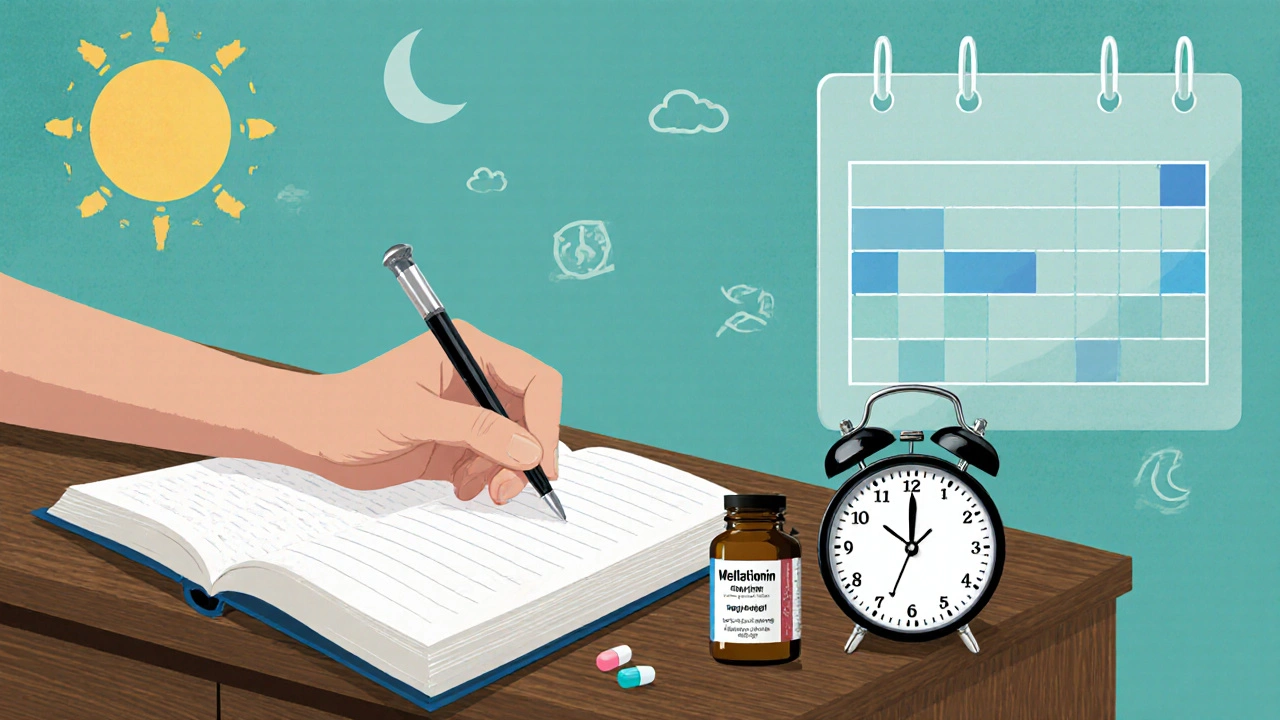
Common Pitfalls and How to Overcome Them
- Weekend Sleep‑In: Sleeping past the planned wake‑time on Saturdays re‑sets the clock. Keep the alarm on; if you’re exhausted, a short 20‑minute nap before noon is better than a long lie‑in.
- Late‑Evening Caffeine: Even a small cup after 3p.m. can delay melatonin release. Switch to decaf or herbal tea after noon.
- Inconsistent Light Exposure: Skipping the morning light session for a few days can stall progress. Set a reminder on your phone or link the session to another habit, like breakfast.
- Screen Time Overload: Blue‑light apps are not a cure‑all. Combine software filters with a physical blue‑light blocking pair of glasses for maximum effect.
- Over‑reliance on Melatonin: Using high doses nightly can blunt the body’s natural production. Use the lowest effective dose and taper off once your sleep window stabilises.
When to Seek Professional Help
If after six weeks of disciplined hygiene, light therapy, and low‑dose melatonin you still cannot fall asleep before 2a.m., it’s time to consult a sleep specialist. They can run a actigraphy assessment, rule out co‑existing conditions (e.g., restless legs), and prescribe chronotherapy plans that involve gradual bedtime advances.
Frequently Asked Questions
Can DSDS (Delayed Sleep Phase Syndrome) be cured without medication?
A complete cure is rare, but many people achieve a functional schedule using strict sleep hygiene, morning light exposure, and low‑dose melatonin. The key is consistency; the body can retrain its clock over weeks to months.
How bright should my morning light box be?
Aim for 10000 lux at eye level, positioned about 30cm away. A 20‑minute session right after waking is the standard protocol.
Is it safe to take melatonin every night?
Low doses (0.3-0.5mg) taken 30 minutes before the intended bedtime are generally safe for short‑term use. Long‑term daily use should be discussed with a clinician to monitor any tolerance or daytime drowsiness.
What’s the best bedtime routine for a night owl?
Start winding down at least 60 minutes before the target sleep time: dim lights, switch off screens, enjoy a warm shower, and do a brief relaxation exercise. Consistency signals the brain that sleep is coming.
Can exercise help shift my sleep phase?
Yes, but timing matters. Moderate aerobic activity in the morning or early afternoon supports phase advancement. Vigorous exercise after 6p.m. can increase adrenaline and delay sleep.
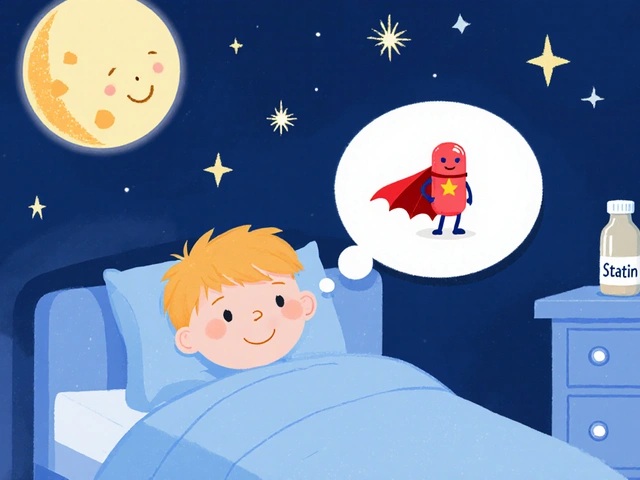
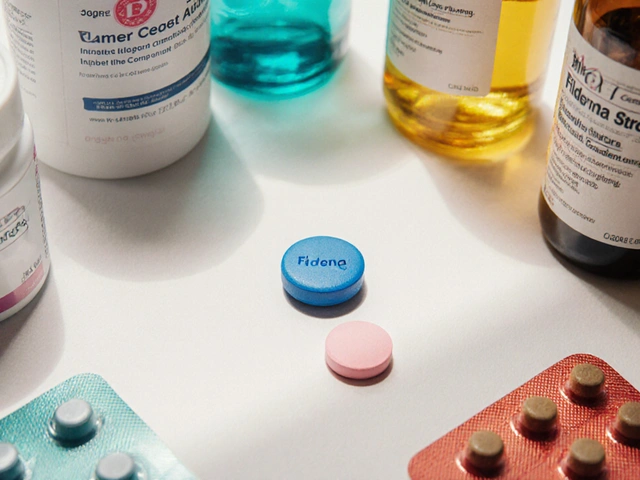

![How to Buy Premarin (Conjugated Estrogens) Online Safely in the UK [2025 Guide]](/uploads/2025/09/thumbnail-how-to-buy-premarin-conjugated-estrogens-online-safely-in-the-uk-2025-guide.webp)
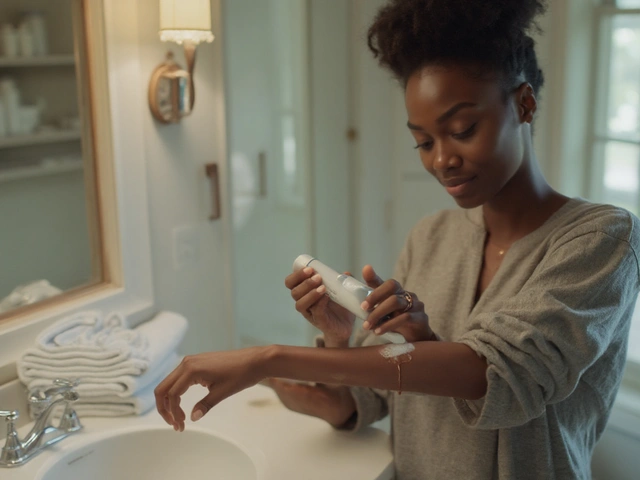
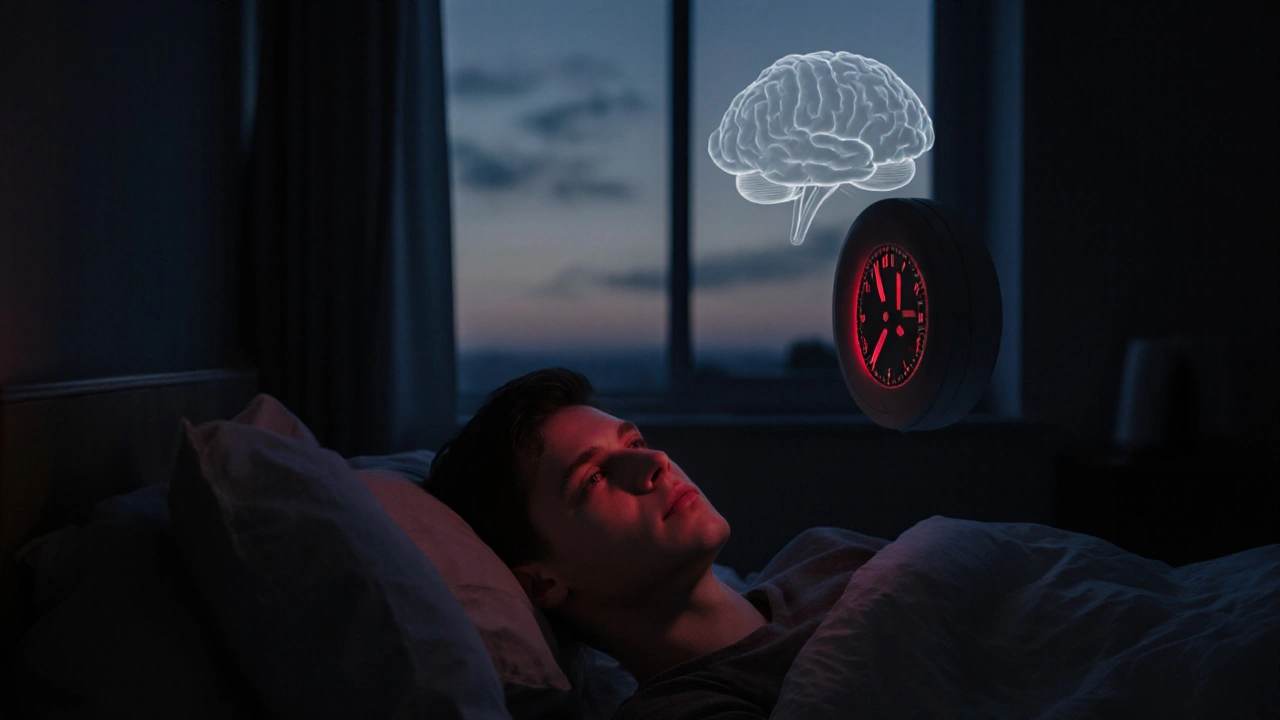
6 Comments
Great overview! If you’re struggling with DSPS, start by fixing just one piece of your routine-like setting a consistent wake‑up time-even on weekends. That small anchor can make the rest of the hygiene steps fall into place.
Indeed, the implementation of a disciplined sleep‑hygiene regimen, coupled with precise photic stimulation, represents a cornerstone in the management of delayed sleep‑phase syndrome; consequently, adherence to these protocols is paramount.
Listen, you can’t just slap a night‑cap on a chaotic schedule and expect miracles-your brain needs a rave‑like cue to shift gears, so crank those amber lights and swap that midnight gaming session for a brisk sunrise jog!
Oh sure, because 15 minutes of “consistent” bedtime is going to magically sync your internal clock-just like my coffee habit fixes my insomnia :)
Yo, i think its importnt to keep a diary, note even the tiny stuff like a snack or a vibe, that way you can spot patterns that you might miss otherwise.
While your enthusiasm is noted, the data suggests that half‑hearted attempts at light exposure yield negligible phase advancement; without a rigorously quantified protocol, anecdotal “rave‑like cues” are little more than placebo.